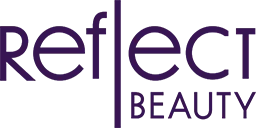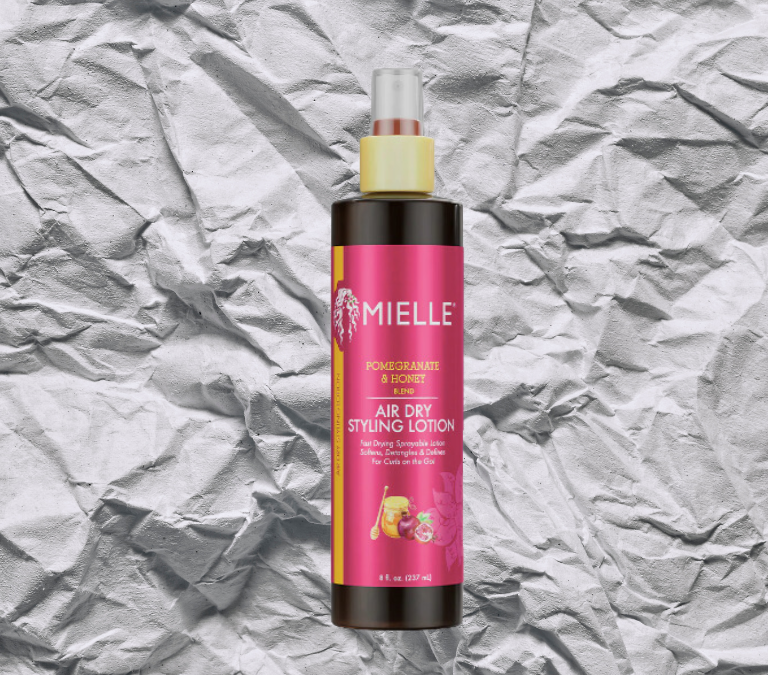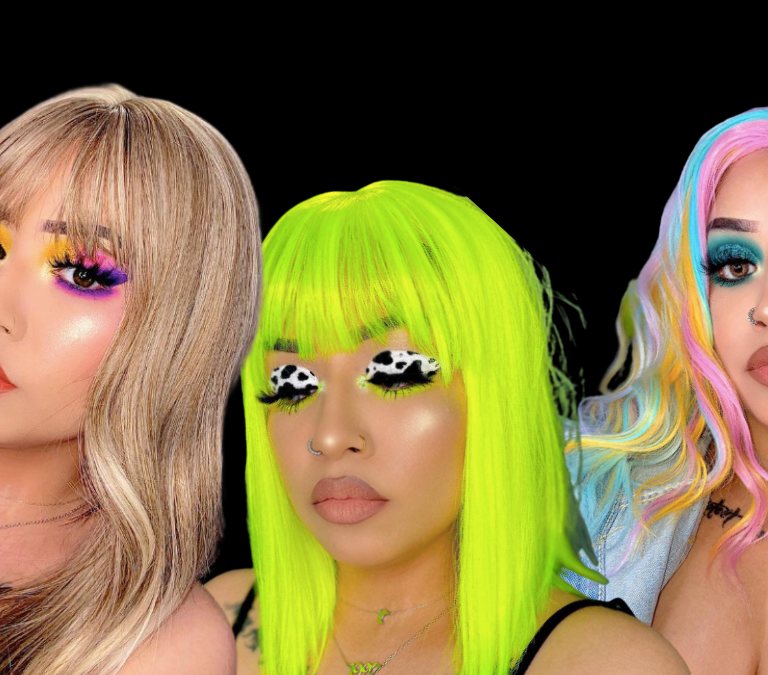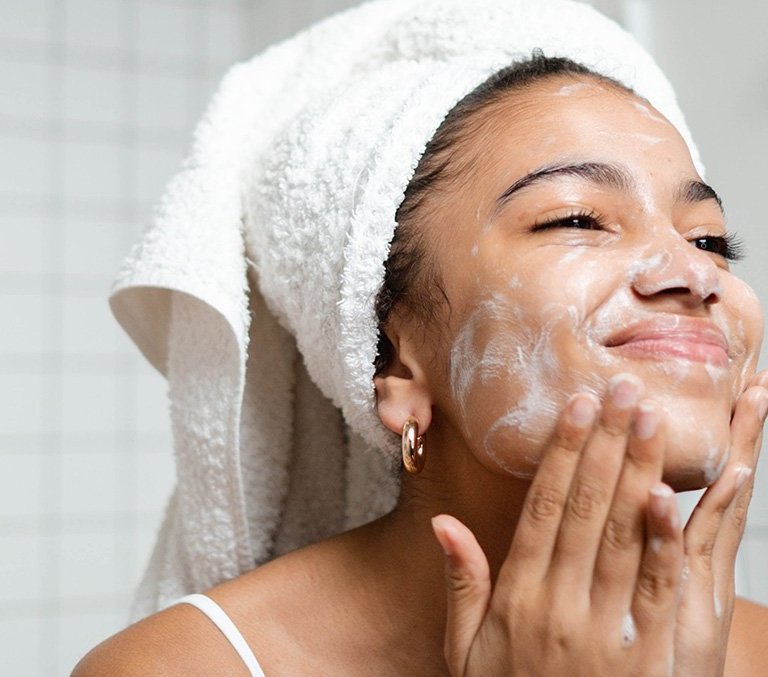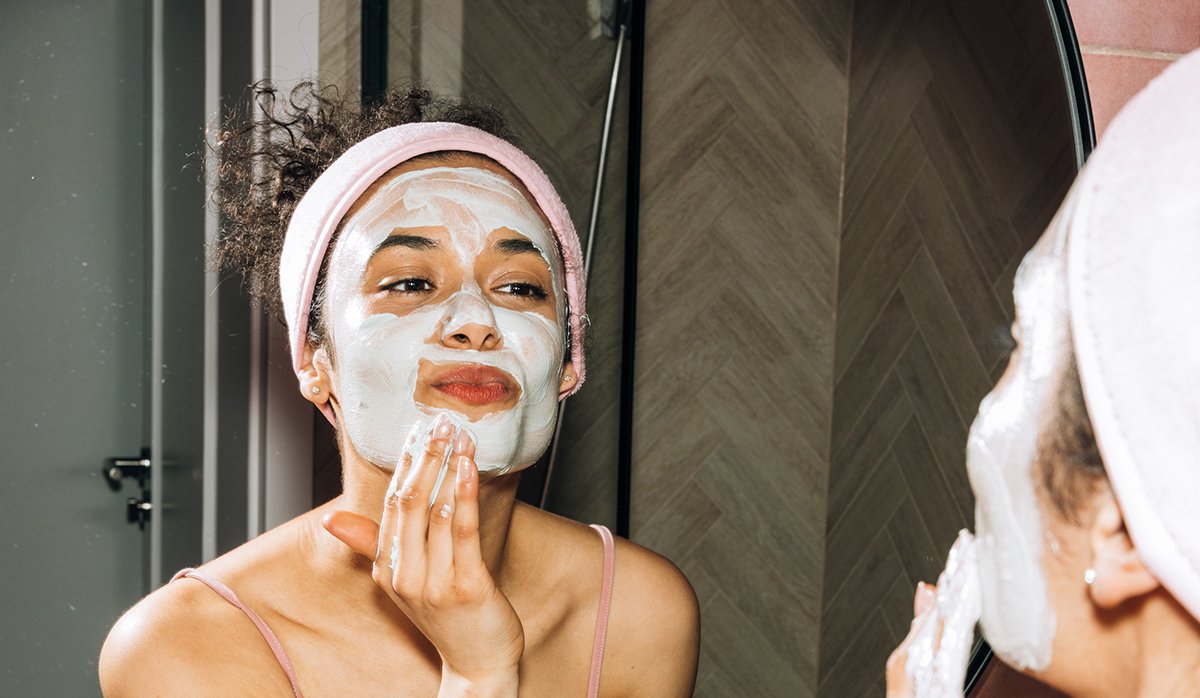
If you have oily skin on your T-zone you’ve probably dealt with or are dealing with clogged pores. These are either blackheads or sebaceous filaments, but although they might look similar, they are different skin structures with different roles.
Once you understand the difference, you’ll know how to tackle them. Here’s what they are and how to update your skincare routine.
[SEE ALSO: 5 Tips For Hydrated Fall Skin]
Blackheads vs Sebaceous Filaments
First, science. Everything starts with the sebaceous glands. Sebaceous glands are the oil-producing tissue in the skin and they are always linked to a hair follicle. Sebum secreted from sebaceous glands travels through the tunnel-shaped structure of the hair follicle to reach the surface of the skin. Sebum is full of waxes and oils that help nourish the skin and form a protective layer to keep hydration on the skin and stop it from evaporating.
When hair follicles are filled with cells and sebum, this oily content looks like thread-like structures that are known as sebaceous filaments. They appear as small, pale yellow, or grayish dots in the pores and are uniform in size and distribution. Sebaceous glands play an important role in skin health by transporting sebum to the surface of the skin, so they are completely normal and nothing to be concerned about.
Maybe you’ve tried to get rid of them by using pore strips, and although they are a quick fix to remove pore buildup, sebaceous glands will appear again after some time because that’s their function. A better way to approach sebaceous glands is by using exfoliants to help reduce their appearance.
While sebaceous filaments are normal structures from the skin, blackheads aren’t and should be removed properly. Blackheads, also known as open comedones, are considered a type of acne. Hair follicles can be clogged with excess oil, dead skin cells, and sometimes bacteria. When the buildup is exposed to air, it oxidizes and turns into a dark or black color. This is what we know as blackheads and they usually form on areas of the skin with a high concentration of sebaceous glands, such as the face, neck, chest, and back.
How To Treat Blackheads
Now you know that sebaceous filaments are normal structures and blackheads are a type of acne. So, if you have blackheads you may want to visit the esthetician or the dermatologist for safe professional blackhead extractions. After they are removed, skincare should be your ally to prevent them from forming again.
Both blackheads and sebaceous filaments benefit from a skincare routine that includes proper cleansing, sebum regulation, and exfoliation. Here are some active ingredients that you want to include in your skincare routine to improve the appearance of sebaceous filaments and to prevent the formation of blackheads:
- Salicylic acid: This is an oil-soluble exfoliating acid that can penetrate deeper into the pores. Once in the pore, salicylic acid works by helping remove excess oil and dead skin cells to keep your pores unclogged. Salicylic acid is a great ingredient since it also has anti-inflammatory and antibacterial properties. It should be avoided during pregnancy or if there is a known allergy to aspirin.
- Niacinamide: This is a great ingredient that can help restore the skin barrier, and reduce unwanted pigmentation. When it comes to pores, it can help regulate sebum production.
- Retinoids: Ingredients like retinol, retinal, or adapalene are part of the retinoid family. They work by regulating cell turnover in your skin, meaning that they increase how quickly your skin cells are shed. In terms of pores, retinoids help keep your pores unclogged, reducing the risk of sebum and bacteria accumulation that causes breakouts and buildup accumulation.
These are our recommendations to keep your pores unclogged, reduce the appearance of sebaceous filaments, and prevent blackhead formation.
Do you include any of them in your skincare routine? Let us know in the comments!
